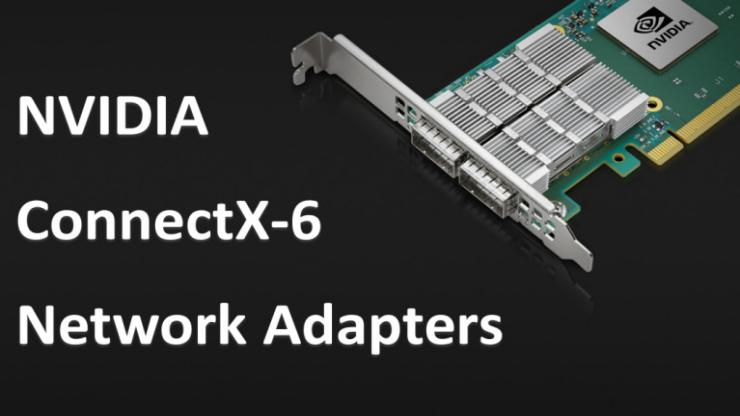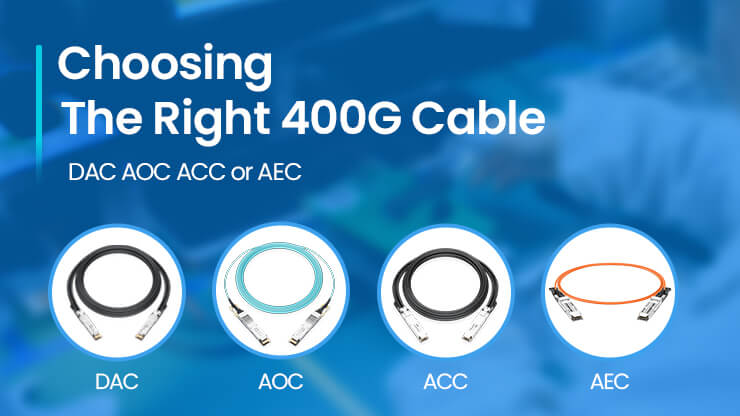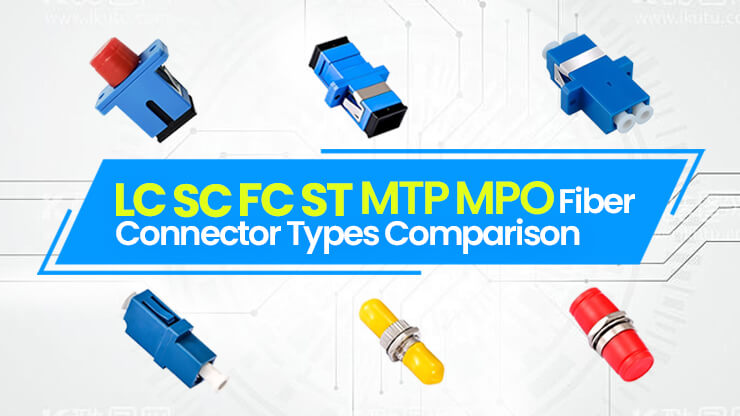QSFP-DD vs OSFP vs QSFP112: Which 400G Module Packaging Works Best for You?
400G Optical Module Introduction
What is a 400G Optical Module
The function of an optical module is to perform photoelectric conversion. The 400G optical module is an optical-electrical conversion module that supports high-speed data transmission of 400Gbps. It achieves high-speed interconnection in scenarios such as data centers through photoelectric conversion. Its core value lies in balancing rate, power consumption, and deployment costs through high-density packaging and advanced modulation technology, making it a key infrastructure of modern network architectures.
Compared with traditional optical modules, the 400G products adopt PAM4 modulation technology. The single-channel rate can reach 50Gbps, and the total rate can be 400Gbps through multi-channel parallel transmission. The typical design usually includes 4 or 8 optical channels, using LC duplex interface or MPO interface, and can meet the transmission requirements of different distances ranging from 50m to 80km.
Evolution of Optical Module Packaging Technology
The data rate of optical modules has evolved from the initial megabits and gigabits to the current 400G, 800G, and even 1.6T. The packaging types have also undergone various changes. Initially, SFP packaging was predominant, which was small in size but had limited data rates and was commonly used for optical modules with rates below 25G. At 40G and 100G, QSFP packaging types were adopted, achieving rate breakthroughs through four-channel parallel transmission, typically using NRZ modulation. Subsequently, PAM4 modulation further increased the single-channel rate, enabling 200G data transmission rates under QSFP packaging. In the 400G era, facing the dual challenges of port density and power consumption, the industry has divided into three technical routes. Based on the traditional QSFP packaging, QSFP-DD and QSFP112 packaging were expanded, as well as the new OSFP packaging, forming differentiated solutions.
The changes in packaging types are not only about physical size but also involve signal integrity design, cooling solutions, and industry chain collaboration. 400G optical modules need to address the problem of high-frequency signal attenuation. Through technologies such as PCB impedance control and connector optimization, signal quality is ensured. At the same time, higher cooling requirements are imposed in high-density deployments. The following will provide a detailed analysis of the technical parameters, advantages and disadvantages, and application scenarios of each packaging type.
Detailed Explanation of QSFP-DD Packaging
Technical Architecture and Core Parameters
QSFP-DD is the full name of Quad Small Form-Factor Pluggable Double Density. Its appearance is similar to the traditional QSFP28/56, with the same width and height, but the depth is longer to accommodate double-row contacts, which is also known as double density. QSFP-DD provides 8 electrical channels, with each channel supporting 50Gb/s PAM4, achieving a transmission rate of 400G. QSFP-DD can use 8x50G PAM4 signals, or can be aggregated into 4x100G PAM4 output through optics, supporting 400GBASE-SR8 and 400GBASE-SR4 standards. QSFP-DD can be split into 2x200G or 4x100G for use, meeting the deployment requirements of various network architectures.
The typical power consumption of the QSFP-DD module is around 5 to 8W. The high-end laser module can approach 10 to 12W. The QSFP-DD MSA specification reserves at least 12W of heat dissipation capacity because it does not integrate large heat dissipation fins, mainly relying on the chassis air duct or onboard fans for heat dissipation. QSFP-DD has good backward compatibility, and its socket can be inserted into the QSFP series modules, compatible with low-speed modules with single-row contacts, which greatly reduces the system upgrade cost. Moreover, the QSFP-DD specification has been jointly customized by multiple manufacturers and developed for a long time, and is now quite mature, with stable prices and supply.
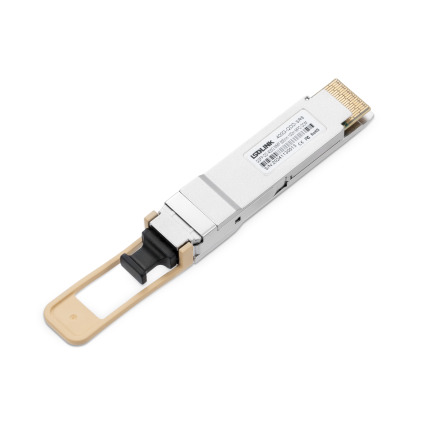
Advantages and Disadvantages of QSFP-DD
Core advantages:
- High density compatibility: Completely reuses the specifications and dimensions of QSFP. QSFP-DD ports are compatible with QSFP-type optical modules and support high-density deployment.
- Low power consumption and cost advantages: Utilizes 8x50G PAM4 modulation technology, with power consumption controlled below 12W. Through COB packaging and integrated DSP chips, manufacturing costs are reduced.
- Expansion potential: Already supports the QSFP-DD 800G specification, facilitating subsequent upgrades, extending the lifecycle, supporting channel splitting, and adapting to various network architectures.
Weaknesses:
- Power Limitation: The power consumption limit of QSFP-DD modules is approximately 12W, which is lower than that of OSFP. When expanding to higher speeds in the future, it may struggle to meet the demand.
- Poor Heat Dissipation Capacity: Due to the small size of QSFP-DD and the absence of an active cooling structure, the heat dissipation pressure is high during dense deployment. It requires the use of switches or server chassis ventilation channels for cooling.
Application and Adaptation Scenarios
The 400G optical modules with QSFP-DD packaging are typically suitable for high-performance computing and cloud data centers, which have extremely high requirements for bandwidth and port density. Due to their compatibility with QSFP28, QSFP-DD is commonly used in network environments that require gradual deployment upgrades. It is also the mainstream choice for various 400G Ethernet short-distance links. Some aggregation layers and backbone layers also use QSFP-DD for 400G interconnection.
Detailed Explanation of OSFP Encapsulation
Technical Architecture and Core Parameters
The full name of OSFP packaging is Octal Small Form-Factor Pluggable. OSFP packaging is specifically designed for high-bandwidth and high-power scenarios. In terms of physical size, OSFP is larger than QSFP-DD. Its width and depth are both greater than QSFP-DD. Moreover, OSFP is designed with an integrated heat sink position reserved, and the module body has multiple metal heat dissipation fins, which facilitate rapid heat dissipation. OSFP also supports 8 electrical channels. In the early stage, the main solution was 8x50G PAM4, and later it evolved to 800G, achieving 8x100G PAM4. The subsequent 400G OSFP only uses 4 channels to achieve 400G rate. 400G OSFP also supports 2x200G and 4x100G branches. Due to its larger packaging, OSFP has better heat dissipation performance, which provides better signal stability. However, this design also has a relatively higher cost. Moreover, compared to the ecosystem of QSFP-DD, its equipment support is less, and the initial deployment cost is higher.
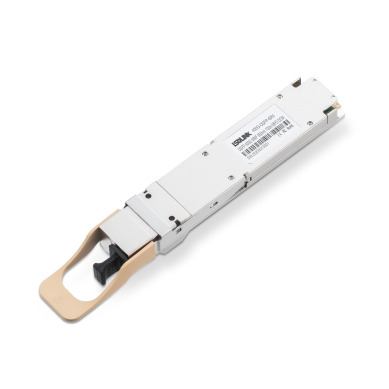
Advantages and Disadvantages of OSFP
Advantages:
- High power and heat dissipation capability: Integrated heat sink design, supporting stable operation of high-power modules, suitable for long-distance transmission.
- Future compatibility: Supports upgrading to OSFP 800G/1.6T, with high port adaptability.
Limitations:
- Volume and density constraints: Compared to QSFP-DD, it is larger in volume and has a lower port density.
- Insufficient compatibility: It is not backward compatible with QSFP series modules and requires dedicated switches, resulting in higher initial deployment costs.
Application and Adaptation Scenarios
The 400G optical modules encapsulated by OSFP are typically used for network card interconnection. Through high-speed communication between network cards and GPUs, they enable massive data transmission in scenarios such as big data and AI model training. The encapsulation of OSFP can be adapted to liquid-cooled cabinets and supports stable operation in high-temperature environments.
Detailed Explanation of QSFP112 Package
Technical Architecture and Core Parameters
QSFP112 (Quad Small Form-Factor Pluggable112), which means achieving a transmission rate of 112G per channel based on the QSFP standard, thus enabling 400G data transmission. Compared with 8-channel architecture of QSFP-DD, its single-channel rate doubles, significantly reducing the complexity of signal parallelism, and it is backward compatible with QSFP56/QSFP28. Through silicon photonics integration and LPO technology, the typical power consumption of QSFP112 is controlled within 8W, which is 20% lower than that of QSFP-DD in the same scenario.

Advantages and Disadvantages of QSFP112
Advantages:
- Bandwidth density and energy efficiency lead: With a single-channel rate of 112G and maintaining the QSFP package size, it enables high-density deployment. Combined with LPO technology, power consumption is significantly reduced.
- Compatibility and smooth upgrades: The dimensions are fully compatible with QSFP28/QSFP56, supporting the upgrade of existing swithches, reducing the cost of network interation, and 100G optical modules can continue to run at full speed on QSFP112 ports.
Limitations:
- Long-distance transmission capability is limited: Compared with QSFP-DD, due to the size of packaging, the heat dissipation is not as good as OSFP. For long-distance transmission optical modules, better external heat dissipation conditions are required.
- Higher manufacturing cost: The 112G PAM4 modulation has strict requirements for the linearity of the laser and the DSP algorithm, resulting in higher module costs.
Application and Adaptation Scenarios
The QSFP112 short-distance transmission optical module has high energy efficiency and is mainly suitable for short-distance interconnection in data centers, such as high-density switching between leaf-spine switches and servers, supporting high-data-training for AI clusters. Its low-latency feature can support high-frequency trading in the financial industry and edge computing scenarios.
QSFP-DD vs OSFP vs QSFP112
Technical Parameter Comparison
The technical parameters of QSFP-DD, OSFP and QSFP112 can be compared from the following aspects.
| Parameters | OSFP | QSFP-DD | QSFP112 |
| Package size | 70mm×18mm×9.6mm | 76mm×18.35mm×8.5mm | 76mm×18.35mm×8.5mm |
| maximum rate | 800G/1.6T | 800G | 400G |
| channel fabric | 8 Channel | 8 Channel | 4 Channel |
| Typical power consumption | 7-18W | 5-12W | 5-10W |
| thermal design | Integrated metal heat sink | Optimize cage structure + passive heat dissipation | Passive heat dissipation + silicon photonic integration |
| Future scalability | Supports 1.6T/3.2T evolution | Supports 800G | Support 800G evolution (4×200G PAM4) |
Compatibility and Cost Analysis
From the perspective of compatibility, the QSFP-DD and QSFP112 packages offer much better compatibility compared to the OSFP package. They support the original QSFP56 and QSFP28 packaging types, enabling cost-effective network upgrades and allowing for lower initial network upgrade costs. On the other hand, the OSFP package is only compatible with OSFP- specific ports and requires the replacement of dedicated switches or network cards, resulting in higher initial deployment costs.
Selection of Application Scenarios
In actual deployment, the selection of OSFP, QSFP-DD and QSFP112 needs to be based on a comprehensive consideration of the requirements of the scenarios and technical characteristics.
For supercomputing centers and AI training clusters, OSFP packaging is the preferred choice. Its high power support (above 20W) and compatibility with liquid cooling can meet the strict cooling requirements of the GPU fully interconnected architecture.
Common Questions Answered (FAQ)
Q: Can a switch with QSFP-DD ports accommodate QSFP56-200G optical modules?
A: QSFP-DD ports are backward compatible with QSFP56/QSFP28/QSFP+ optical modules. You can set the specified rate on the switch management page and then use the optical modules of the specified type and packaging.
Q: I would like to know if QSFP112 can support expansion to 4xQSFP28 100G?
A: Yes, you can use 400G-Q112-DR4 optical modules to link 100G-Q28-DR optical modules through branch cables to achieve the function of splitting into four, meeting your network requirements.
Q: Can the OSFP packaged 400G optical module be directly connected to the QSFP-DD packaged 400G optical module?
A: Yes, you can connect 400G-QDD-SR4 and 400G-OSFP-SR4 optical modules through MPO-12 multimode fiber jumper to achieve cross-device transmission.



